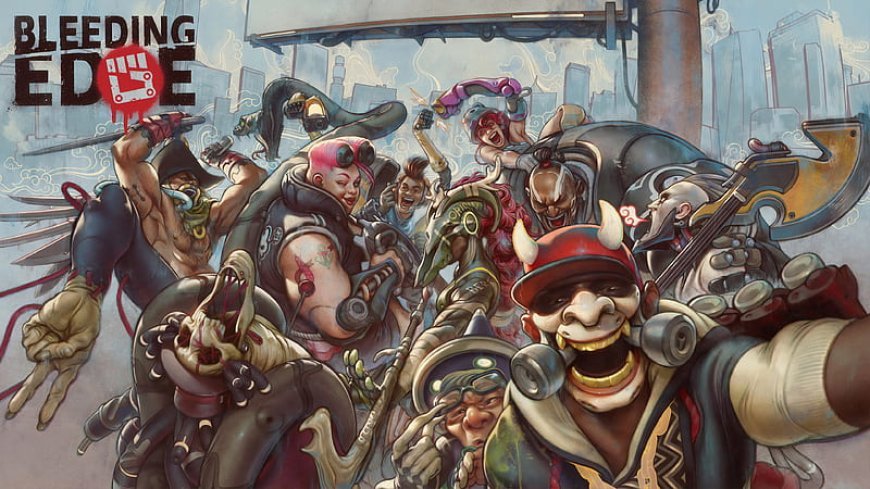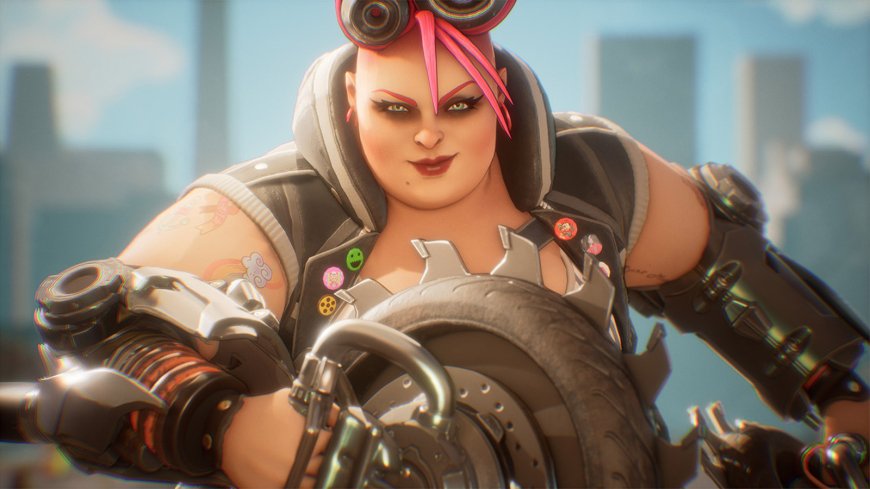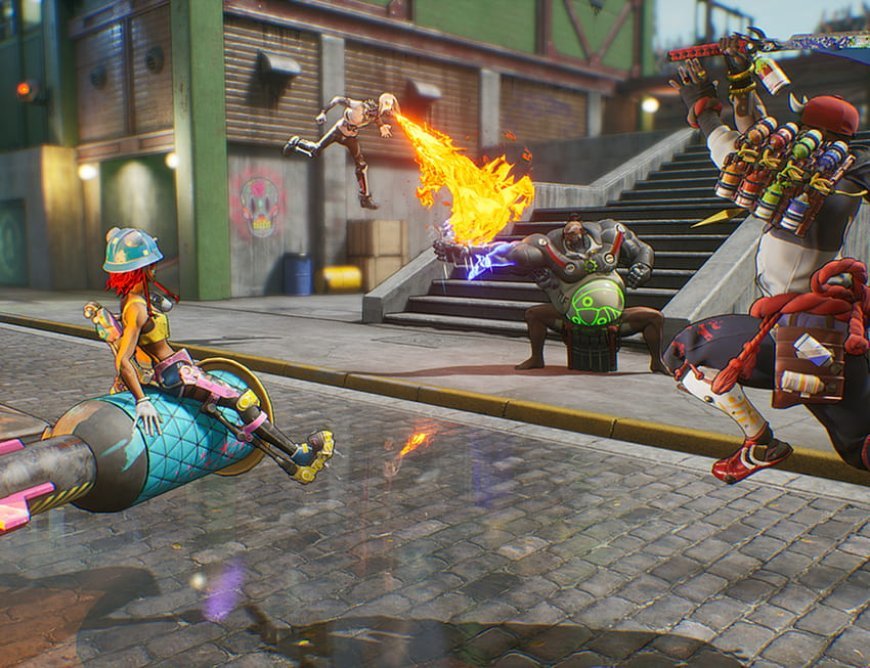Bleeding Edge Review – A Missed Opportunity in the MOBA Genre
Explore our Bleeding Edge review to find out why this unique entry into the MOBA genre might have fallen short. Delve into the game's innovative mechanics, its strengths and weaknesses, and whether it ultimately delivers on its promise or misses the mark.

Bleeding Edge Review – A Missed Opportunity in the MOBA Genre
Introduction
Bleeding Edge is a 4v4 multiplayer online battle arena (MOBA) game developed by Ninja Theory and published by Xbox Game Studios. Released in March 2020 for Windows and Xbox One, the game aimed to bring a fresh take to the genre with its unique blend of melee combat, colorful characters, and chaotic team-based battles. Despite its potential and the pedigree of its developer, Bleeding Edge received mixed reviews and struggled to maintain a player base, leading to the end of its development just ten months after its launch. This review delves into what Bleeding Edge got right, where it fell short, and what ultimately led to its demise.
Gameplay: Fast-Paced Combat with Strategic Depth
At its core, Bleeding Edge offers a fast-paced, action-oriented experience that distinguishes itself from traditional MOBAs through its focus on melee combat. The game features a diverse roster of characters, each with unique abilities and roles, ranging from agile assassins to heavy tanks and support healers. Matches are team-based, requiring players to work together to achieve objectives, whether it's capturing points, escorting payloads, or simply outmaneuvering the enemy team.
The combat is fluid and engaging, with an emphasis on combos, dodges, and well-timed abilities. The game's controls are intuitive, making it easy for newcomers to jump in, while the strategic depth ensures that more experienced players have plenty to master. Each character feels distinct, and finding the right synergy with your team is key to success.

Character Design: A Colorful and Diverse Cast
One of Bleeding Edge's standout features is its character design. The game's roster includes a mix of outlandish and stylized characters, each with a unique backstory and personality. From a cyberpunk guitarist with an electrifying attack to a robotic snake controlling a heavily armored shell, the creativity on display is commendable. The character models are vibrant and detailed, and the animations are smooth, adding to the overall visual appeal.
The diversity in the roster allows for a variety of playstyles, catering to both players who prefer aggressive, in-your-face combat and those who enjoy supporting their team from a distance. The game also includes a robust customization system, allowing players to unlock and equip different skins, emotes, and hoverboards to further personalize their characters.
Graphics and Sound: A Stylish Presentation
Bleeding Edge boasts a distinctive art style that combines elements of cyberpunk, street art, and sci-fi, creating a visually striking world. The game's maps are colorful and filled with details that bring the chaotic arenas to life. The sound design complements the visual experience, with energetic music, impactful sound effects, and voice acting that gives each character a unique personality.
However, while the presentation is stylish, it doesn't quite reach the level of polish seen in other games from Ninja Theory. The graphics, while appealing, can sometimes feel a bit rough around the edges, and the game's performance, particularly on older hardware, can be inconsistent.
Gameplay Balance and Content: A Double-Edged Sword
While Bleeding Edge has a solid foundation in terms of gameplay mechanics, it suffers from balance issues and a lack of content. The game launched with a limited number of maps and modes, which quickly led to a sense of repetition. The small roster of characters, while diverse, also meant that the meta could become stale, with certain characters dominating matches.
Balance patches were introduced post-launch, but the game's community often expressed frustration with the slow pace of updates and the perceived imbalance between certain characters. This, coupled with the lack of new content, contributed to a decline in player engagement over time.

Multiplayer and Community: A Struggle to Maintain Momentum
As a multiplayer-only game, Bleeding Edge relies heavily on its player base to thrive. Unfortunately, the game struggled to maintain a strong community, with player numbers dwindling soon after launch. This was partly due to the issues mentioned above—lack of content, balance problems, and performance issues—but also because of the highly competitive nature of the MOBA genre. With established giants like League of Legends, Dota 2, and Overwatch dominating the space, Bleeding Edge faced an uphill battle in attracting and retaining players.
The decision by Ninja Theory to cease development on Bleeding Edge in January 2021 effectively marked the end of the game's life cycle. While the servers remain online, the lack of ongoing support means that the game's community has become fragmented, with only a small, dedicated group of players still engaging with the game.
Bleeding Edge FAQ
Q1: What is Bleeding Edge?
A: Bleeding Edge is a 4v4 multiplayer online battle arena (MOBA) game developed by Ninja Theory and published by Xbox Game Studios. Released in March 2020 for Windows and Xbox One, the game features melee combat and team-based objectives, with a roster of unique characters each with their own abilities and playstyles.
Q2: What platforms is Bleeding Edge available on?
A: The game is available on Windows (via Microsoft Store and Steam) and Xbox One. It is also playable on Xbox Series X|S through backward compatibility.
Q3: What is the gameplay like in Bleeding Edge?
A: Bleeding Edge focuses on 4v4 team-based battles where players choose characters with different roles, such as tanks, damage dealers, and support. The game features melee combat with unique abilities for each character, and matches involve capturing objectives, escorting payloads, and defeating the enemy team.
Q4: What types of characters are in the game?
A: The game includes a diverse roster of characters with distinct abilities and roles. Characters range from agile assassins and powerful tanks to supportive healers and damage dealers. Each character has a unique playstyle and set of skills designed to contribute to team strategy.
Q5: Are there different game modes in Bleeding Edge?
A: Yes, Bleeding Edge features various game modes including Objective Control, where teams compete to capture and hold points on the map, and Escort, where one team escorts a payload while the other tries to stop them. The game also includes casual and ranked matchmaking for competitive play.
Q6: How does character customization work in Bleeding Edge?
A: Players can customize their characters with different skins, emotes, and hoverboards. Customization options are unlocked through gameplay or can be purchased via in-game currency. These cosmetic items do not affect gameplay but allow players to personalize their experience.
Q7: Why did Bleeding Edge receive mixed reviews?
A: Bleeding Edge received mixed reviews due to several factors. While its melee combat and character design were praised, the game faced criticism for balance issues, limited content, and performance problems. The game's player base struggled to stay active, which affected its long-term success.
Q8: Is Bleeding Edge still being updated?
A: No, development on Bleeding Edge was officially ended by Ninja Theory in January 2021. As a result, there are no further updates or new content being added to the game. The servers remain online, but the community has become smaller and less active.
Q9: Can I still play Bleeding Edge?
A: Yes, you can still play Bleeding Edge as the servers are still active. However, the player base has decreased, which may affect match availability and wait times.
Q10: How does Bleeding Edge compare to other MOBAs?
A: Bleeding Edge distinguishes itself from traditional MOBAs by focusing on melee combat and a smaller roster of characters. Unlike games like League of Legends or Dota 2, which have a more strategic and macro-focused gameplay, Bleeding Edge emphasizes fast-paced action and character abilities. However, it faced challenges in competing with established titles in the genre.
Q11: Are there any notable issues with the game?
A: Some of the notable issues with Bleeding Edge include balance problems where certain characters or strategies dominated the gameplay, a lack of content that led to repetitive gameplay, and performance issues on some hardware. These factors contributed to the game's mixed reception and eventual decline.
Q12: What should I know before buying Bleeding Edge?
A: Before buying Bleeding Edge, consider that the game has received mixed reviews and has seen a decline in active development. If you enjoy melee-focused team-based combat and are interested in trying something different from traditional MOBAs, it might still offer some fun. However, be aware that the player base may be smaller and updates will not be forthcoming.

Conclusion: A Bold Experiment That Fell Short
Bleeding Edge was a bold experiment that attempted to carve out its niche in the crowded MOBA genre. Its focus on melee combat, unique character designs, and stylish presentation set it apart from its competitors, but these strengths were ultimately overshadowed by balance issues, a lack of content, and an inability to maintain a strong player base.
For those who enjoy team-based multiplayer games and are looking for something different, Bleeding Edge still offers a fun and engaging experience—albeit one with limited long-term appeal. However, the game's short lifespan and the end of its development serve as a reminder of the challenges faced by new IPs in the highly competitive world of online gaming. While Bleeding Edge may not have lived up to its full potential, it remains an interesting footnote in Ninja Theory's otherwise impressive portfolio.








